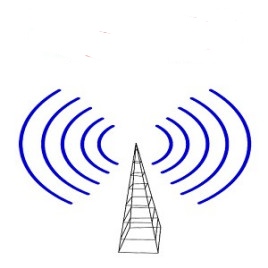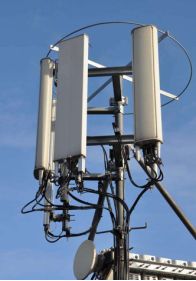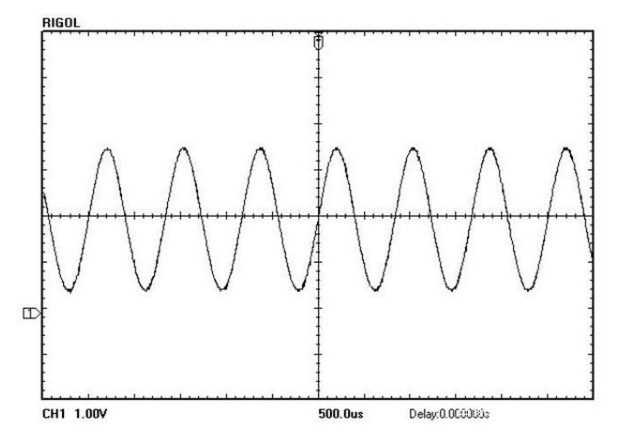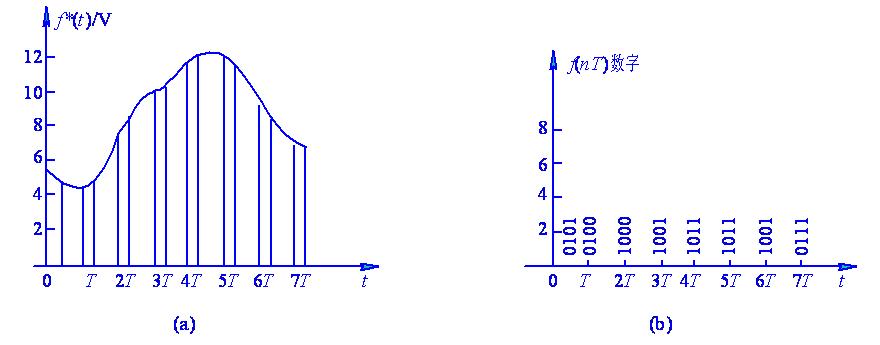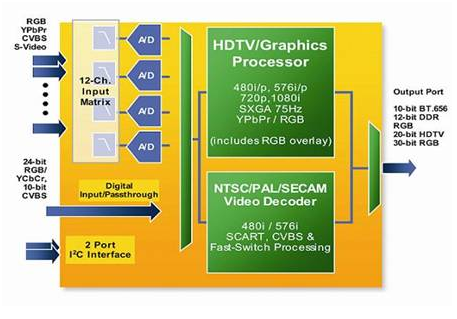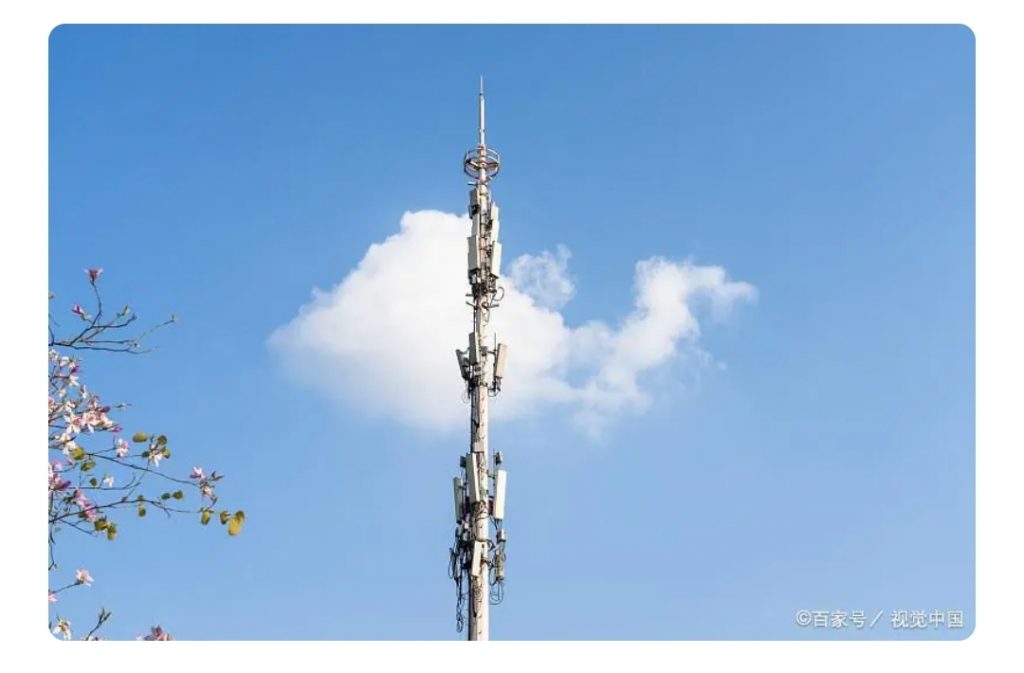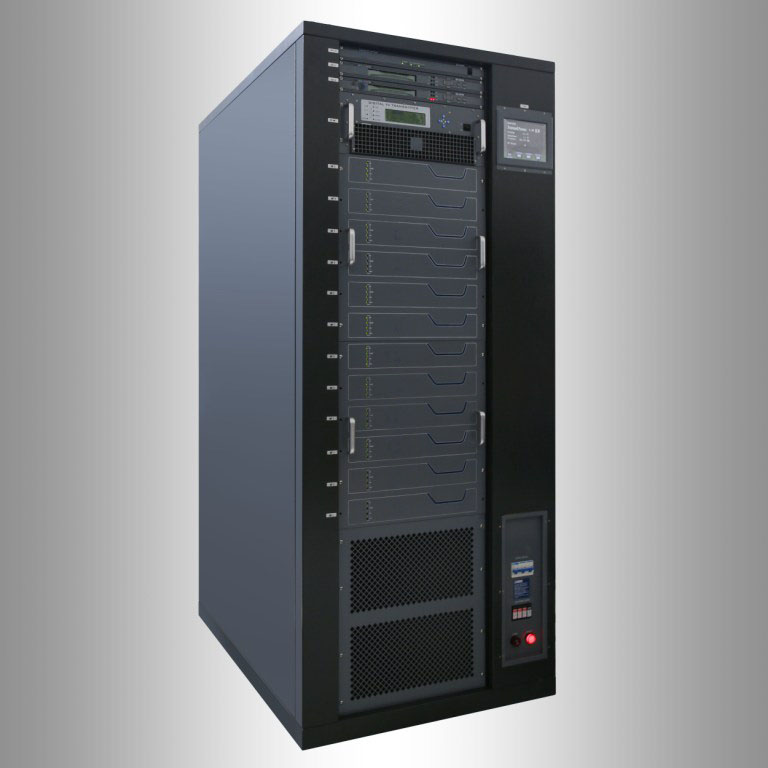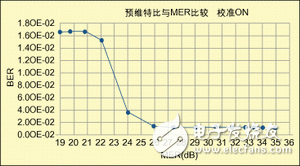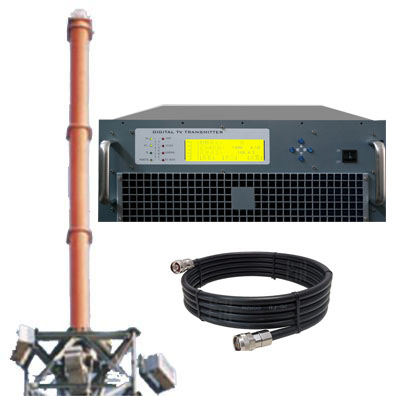What are the advantages of digital TV, an introduction to digital TV
The image signal and sound signal transmitted by traditional analog TV are continuously changing voltage and current.
The image signal and sound signal transmitted by traditional analog TV are continuously changing voltage and current. The bright and dark changes of the image and the size of the sound are characterized by the continuously changing voltage and current.
What digital TV transmits is not continuous “0” and “1” pulse signals. When transmitting, the continuously changing analog signal must first be sampled, quantized, compressed and encoded to become a discontinuous binary pulse signal.
Compared with the traditional analog TV system, the advantages of digital TV mainly include the following points:
The noise and distortion of the digital TV signal have nothing to do with the number of continuous processing of the signal, and there will be no accumulation of noise and distortion. At the same time, digital TV signals are easy to implement error detection and correction, and the transmission quality of images and audio signals is very high.
Digital TV signals are easy to store, control and process, and the storage time has nothing to do with signal characteristics, and digital special effects can be realized, such as freezing, zooming in, zooming out, fast playback, slow playback and other special effects.
Digital TV signals can make reasonable use of spectrum resources. In an 8MHz analog TV channel, a set of high-definition TV programs with a spectrum of 27MHz can be transmitted, or 4 sets – 6 sets of standard-definition TV programs with a spectrum of 6MHz. It greatly improves the user’s demand for diversified and high-quality TV programs.
The digital TV signal is easy to realize the encryption and decryption of the signal, and it is convenient to realize the conditional reception of TV programs, such as pay TV and special data service transmission.
The digital TV system has scalability, scalability and operability, and is convenient for realizing video on demand and interactive operations. The traditional TV station broadcasts any program, and the audience can only watch the program. Instead, the audience can watch whatever program they want. What program improves the independent choice of TV program viewing.
The digital TV system can transmit multi-channel audio signals to improve the audio signal quality. Multi-channel surround sound improves the three-dimensional and spatial surround sense of the sound signal, so that the listener has an immersive audio-visual effect. The audio signal of digital TV system has high signal-to-noise ratio, low distortion, large dynamic range and wide frequency response, which can improve the quality of accompanying sound.
What conditions do families have to watch digital TV programs?
the
At present, the trial broadcast of digital TV programs in various provinces, municipalities and autonomous regions of our country is only trial broadcast in individual cable TV networks. Most of the TV programs on trial broadcast are standard-definition TV programs, and their definition, image quality, and sound quality are the same as those of DVD laser disc players. Therefore, digital TV programs can only be watched in cable TV networks with trial broadcast tasks. Users can watch high-quality standard-definition digital TV programs through the AV terminal or S terminal of ordinary analog TV as long as they configure cable digital TV receiving equipment (set-top).
Can Old Color TVs Watch Digital TV?
Most of the old-fashioned color TV sets do not have AV terminals or S terminals. To watch digital TV programs, only through the set-top with high-frequency (RF) modulation output can you watch digital standard-definition TV programs, but the horizontal resolution of the image is generally only It can reach more than 300 lines, and cannot reproduce the best image horizontal definition of 500-line standard-definition TV.
About “HDTV”
Is it necessary to choose “HD TV” to watch digital TV programs?
First of all, it should be explained that “high-definition TV” is an irregular term, and each enterprise has its own promotional selling point, and the understanding is not the same. But “high-definition television” is a proper term, which should not be confused at will, let alone used casually.
The meaning of high-definition television mainly includes:
The image sampling format is not lower than 1920×1080i, the horizontal resolution of the image is greater than 700 lines, and the playback effect is equivalent to the image quality level of 16mm movie film.
The image aspect ratio is 16:9, and the pitch of the color picture tube shadow mask should be less than 0.6mm (take the 81cm color picture tube as an example).
Image and audio signals are transmitted in digital mode, and the internationally accepted digital TV signal compression, coding, modulation and demodulation methods are adopted.
The sound signal is independent multi-channel surround sound.
According to the above meaning, most of the so-called “high-definition TVs” currently on the market do not meet the above technical requirements.
There are mainly two types of digital TV image formats, in addition to high-definition TV, there is also standard-definition TV.
The meaning of standard definition television mainly includes:
The image sampling format is 720×576i, the horizontal resolution of the image is greater than 500 lines, and the playback effect is equivalent to the quality level of DVD laser disc players.
The aspect ratio of the image is 4:3 (that is, the CRT color TV set currently on the market).
Image, audio, and signal encoding and transmission are digital, and international digital TV signal compression, encoding, modulation, and demodulation methods are adopted.
The audio signal is independent multi-channel surround sound, and currently it is mainly two-channel stereo.
Most of the color TVs currently on the market have AV terminals or S terminals, or Y, U, V (Y, Cr, Cb) component signal input terminals, which can reproduce standard-definition TV programs through digital TV top-up.
The reproduced image quality is mainly determined by the circuit program of the analog TV: the conventional brightness and color separation method, the horizontal resolution of the image is only 320 lines; Greater than 500 lines. If frequency doubling interlaced or progressive scanning is used, the vertical definition of the image can be increased by 50 lines, up to about 450 lines, reaching the highest image quality level of standard definition TV.
If I buy a real high-definition TV now, can I watch digital TV programs directly?
At present, there is no high-definition TV that can directly receive digital TV programs on the market. If there is a high-definition TV that meets the above requirements, the TV station must transmit high-definition TV signals.
At present, some 16:9 wide-screen high-definition TVs on the market are mostly digital-analog compatible. On the one hand, the current interlaced scanning and analog TV signals with a 4:3 aspect ratio can be used to improve the double-frequency scanning format conversion. It becomes a progressive or interlaced scanning TV signal, and on the 16:9 wide-screen picture tube, the analog TV signal of the 4:3 aspect ratio is reproduced in the masking method, and the 4:3 aspect ratio is also displayed in the masking method image.
At present, receiving and reproducing analog TV signals or standard definition TV signals with real high-definition television sets is actually overkill. Because it can only display the standard-definition TV quality level with a horizontal image resolution of 500 lines, or the analog TV image quality level with a horizontal image resolution of 400 lines, it is impossible to reproduce an image with a horizontal resolution greater than 700 line of high-definition television picture quality levels.
In addition, some 4:3 aspect ratio color TVs on the market also claim to be able to receive high-definition TV programs. Its image aspect ratio does not meet the requirements of high-definition television. If it can display high-definition television signals, it can only reproduce high-definition images in a 4:3 aspect ratio picture tube. The picture quality level of television signals is still limited to the standard definition range of 4:3 aspect ratio. It is compatible with display formats, and it is impossible to reproduce the high-definition television picture quality level greater than 700 lines.
The correct configuration of digital TV image display quality should be: 4:3 aspect ratio TV reproduces standard-definition TV programs with a horizontal resolution of 500 lines; 16:9 wide-screen, high-definition TV reproduces Display high-definition TV programs with a horizontal resolution greater than 700 lines.
Reproduce 16:9 widescreen, high-definition television programming on a 4:3 aspect ratio television, or analogue or standard-definition television on a 16:9 widescreen, high-definition picture tube or monitor Programs can at most be format compatible, but it is impossible to achieve the best configuration. They can only be watched, that is, the display format is compatible, and it is impossible to meet the quality level required by the corresponding technical standards.
The aforementioned 19:9 wide-screen, high-definition television produced by high-definition picture tubes are digital-analog compatible machines. They have multi-line frequency automatic tracking technology. Through scanning format conversion, they can receive interlaced scanning analog TV signals, or receive standard-definition digital TV signals through set-top integration. , you can receive and display real high-definition TV programs.
About progressive television
What is a Progressive Scan TV? What are his advantages?
Progressive scan is a display format of double-frequency scanning color TV. It uses the format conversion technology in digital TV signal processing to change the interlaced scan mode of ordinary analog TV into progressive scan mode.
Progressive scanning eliminates the interline flicker caused by interlaced scanning, which can increase and improve the vertical definition of the image, but the horizontal definition of the image does not change. It is the successful application of digital signal processing technology in color TV, and it is the progress of TV technology.
How to connect the progressive scan DVD laser disc player to the color TV correctly?
The working principle of the progressive scan DVD laser disc player is the same as that of the progressive scan TV. It uses the format conversion technology in digital TV signal processing to change the interlaced scan TV signal into a progressive scan TV signal, and the line frequency is doubled. The field frequency can be 50MHz, and can also be increased to 60MHz. This scanning format cannot be reproduced by ordinary TV sets. However, it can be connected to a progressive scan color TV through the VGA interface. At this time, the format conversion circuit in the progressive scan color TV becomes redundant, and the interlaced scan output port of the progressive scan DVD laser disc machine can also be used to combine with the progressive scan Color TV is connected, but at this time the format conversion in the progressive scan DVD laser disc player becomes redundant again.
In this way, it seems that the progressive scan DVD laser disc player has the following situations:
The signal output of a progressive scan DVD player cannot be reproduced on an ordinary interlaced scan TV because the two scan formats are not compatible.
The interlaced signal output terminal of the progressive scan DVD laser disc player can be reproduced by a progressive scan color TV, but the format conversion circuit in the progressive scan DVD laser disc player becomes redundant.
The progressive scan output of a DVD laser disc player can be reproduced by a progressive scan TV with a progressive scan interface, but the format conversion circuit in the progressive scan TV becomes redundant.
From the above analysis, it can be seen that it is a waste of resources to connect a progressive scan DVD laser disc machine to a progressive scan ordinary color TV, but it can reproduce high-quality progressive scan DVD images through the VGA interface of the projector. Signal. It is characterized by continuously changing voltage and current.
What digital TV transmits is not continuous “0” and “1” pulse signals. When transmitting, the continuously changing analog signal must first be sampled, quantized, compressed and encoded to become a discontinuous binary pulse signal.
Compared with the traditional analog TV system, the advantages of digital TV mainly include the following points:
The noise and distortion of the digital TV signal have nothing to do with the number of continuous processing of the signal, and there will be no accumulation of noise and distortion. At the same time, digital TV signals are easy to implement error detection and correction, and the transmission quality of images and audio signals is very high.
Digital TV signals are easy to store, control and process, and the storage time has nothing to do with signal characteristics, and digital special effects can be realized, such as freezing, zooming in, zooming out, fast playback, slow playback and other special effects.
Digital TV signals can make reasonable use of spectrum resources. In an 8MHz analog TV channel, a set of high-definition TV programs with a spectrum of 27MHz can be transmitted, or 4 sets – 6 sets of standard-definition TV programs with a spectrum of 6MHz. It greatly improves the user’s demand for diversified and high-quality TV programs.
The digital TV signal is easy to realize the encryption and decryption of the signal, and it is convenient to realize the conditional reception of TV programs, such as pay TV and special data service transmission.
The digital TV system has scalability, scalability and operability, and is convenient for realizing video on demand and interactive operations. The traditional TV station broadcasts any program, and the audience can only watch the program. Instead, the audience can watch whatever program they want. What program improves the independent choice of TV program viewing.
The digital TV system can transmit multi-channel audio signals to improve the audio signal quality. Multi-channel surround sound improves the three-dimensional and spatial surround sense of the sound signal, so that the listener has an immersive audio-visual effect. The audio signal of digital TV system has high signal-to-noise ratio, low distortion, large dynamic range and wide frequency response, which can improve the quality of accompanying sound.
What conditions do families have to watch digital TV programs?
the
At present, the trial broadcast of digital TV programs in various provinces, municipalities and autonomous regions of our country is only trial broadcast in individual cable TV networks. Most of the TV programs on trial broadcast are standard-definition TV programs, and their definition, image quality, and sound quality are the same as those of DVD laser disc players. Therefore, digital TV programs can only be watched in cable TV networks with trial broadcast tasks. Users can watch high-quality standard-definition digital TV programs through the AV terminal or S terminal of ordinary analog TV as long as they configure cable digital TV receiving equipment (set-top).
Can Old Color TVs Watch Digital TV?
Most of the old-fashioned color TV sets do not have AV terminals or S terminals. To watch digital TV programs, only through the set-top with high-frequency (RF) modulation output can you watch digital standard-definition TV programs, but the horizontal resolution of the image is generally only It can reach more than 300 lines, and cannot reproduce the best image horizontal definition of 500-line standard-definition TV.
About “HDTV”
Is it necessary to choose “HD TV” to watch digital TV programs?
First of all, it should be explained that “high-definition TV” is an irregular term, and each enterprise has its own promotional selling point, and the understanding is not the same. But “high-definition television” is a proper term, which should not be confused at will, let alone used casually.
The meaning of high-definition television mainly includes:
The image sampling format is not lower than 1920×1080i, the horizontal resolution of the image is greater than 700 lines, and the playback effect is equivalent to the image quality level of 16mm movie film.
The image aspect ratio is 16:9, and the pitch of the color picture tube shadow mask should be less than 0.6mm (take the 81cm color picture tube as an example).
Image and audio signals are transmitted in digital mode, and the internationally accepted digital TV signal compression, coding, modulation and demodulation methods are adopted.
The sound signal is independent multi-channel surround sound.
According to the above meaning, most of the so-called “high-definition TVs” currently on the market do not meet the above technical requirements.
There are mainly two types of digital TV image formats, in addition to high-definition TV, there is also standard-definition TV.
The meaning of standard definition television mainly includes:
The image sampling format is 720×576i, the horizontal resolution of the image is greater than 500 lines, and the playback effect is equivalent to the quality level of DVD laser disc players.
The aspect ratio of the image is 4:3 (that is, the CRT color TV set currently on the market).
Image, audio, and signal encoding and transmission are digital, and international digital TV signal compression, encoding, modulation, and demodulation methods are adopted.
The audio signal is independent multi-channel surround sound, and currently it is mainly two-channel stereo.
Most of the color TVs currently on the market have AV terminals or S terminals, or Y, U, V (Y, Cr, Cb) component signal input terminals, which can reproduce standard-definition TV programs through digital TV top-up.
The reproduced image quality is mainly determined by the circuit program of the analog TV: the conventional brightness and color separation method, the horizontal resolution of the image is only 320 lines; Greater than 500 lines. If frequency doubling interlaced or progressive scanning is used, the vertical definition of the image can be increased by 50 lines, up to about 450 lines, reaching the highest image quality level of standard definition TV.
If I buy a real high-definition TV now, can I watch digital TV programs directly?
At present, there is no high-definition TV that can directly receive digital TV programs on the market. If there is a high-definition TV that meets the above requirements, the TV station must transmit high-definition TV signals.
At present, some 16:9 wide-screen high-definition TVs on the market are mostly digital-analog compatible. On the one hand, the current interlaced scanning and analog TV signals with a 4:3 aspect ratio can be used to improve the double-frequency scanning format conversion. It becomes a progressive or interlaced scanning TV signal, and on the 16:9 wide-screen picture tube, the analog TV signal of the 4:3 aspect ratio is reproduced in the masking method, and the 4:3 aspect ratio is also displayed in the masking method image.
At present, receiving and reproducing analog TV signals or standard definition TV signals with real high-definition television sets is actually overkill. Because it can only display the standard-definition TV quality level with a horizontal image resolution of 500 lines, or the analog TV image quality level with a horizontal image resolution of 400 lines, it is impossible to reproduce an image with a horizontal resolution greater than 700 line of high-definition television picture quality levels.
In addition, some 4:3 aspect ratio color TVs on the market also claim to be able to receive high-definition TV programs. Its image aspect ratio does not meet the requirements of high-definition television. If it can display high-definition television signals, it can only reproduce high-definition images in a 4:3 aspect ratio picture tube. The picture quality level of television signals is still limited to the standard definition range of 4:3 aspect ratio. It is compatible with display formats, and it is impossible to reproduce the high-definition television picture quality level greater than 700 lines.
The correct configuration of digital TV image display quality should be: 4:3 aspect ratio TV reproduces standard-definition TV programs with a horizontal resolution of 500 lines; 16:9 wide-screen, high-definition TV reproduces Display high-definition TV programs with a horizontal resolution greater than 700 lines.
Reproduce 16:9 widescreen, high-definition television programming on a 4:3 aspect ratio television, or analogue or standard-definition television on a 16:9 widescreen, high-definition picture tube or monitor Programs can at most be format compatible, but it is impossible to achieve the best configuration. They can only be watched, that is, the display format is compatible, and it is impossible to meet the quality level required by the corresponding technical standards.
The aforementioned 19:9 wide-screen, high-definition television produced by high-definition picture tubes are digital-analog compatible machines. They have multi-line frequency automatic tracking technology. Through scanning format conversion, they can receive interlaced scanning analog TV signals, or receive standard-definition digital TV signals through set-top integration. , you can receive and display real high-definition TV programs.
About progressive television
What is a Progressive Scan TV? What are his advantages?
Progressive scan is a display format of double-frequency scanning color TV. It uses the format conversion technology in digital TV signal processing to change the interlaced scan mode of ordinary analog TV into progressive scan mode.
Progressive scanning eliminates the interline flicker caused by interlaced scanning, which can increase and improve the vertical definition of the image, but the horizontal definition of the image does not change. It is the successful application of digital signal processing technology in color TV, and it is the progress of TV technology.
How to connect the progressive scan DVD laser disc player to the color TV correctly?
The working principle of the progressive scan DVD laser disc player is the same as that of the progressive scan TV. It uses the format conversion technology in digital TV signal processing to change the interlaced scan TV signal into a progressive scan TV signal, and the line frequency is doubled. The field frequency can be 50MHz, and can also be increased to 60MHz. This scanning format cannot be reproduced by ordinary TV sets. However, it can be connected to a progressive scan color TV through the VGA interface. At this time, the format conversion circuit in the progressive scan color TV becomes redundant, and the interlaced scan output port of the progressive scan DVD laser disc machine can also be used to combine with the progressive scan Color TV is connected, but at this time the format conversion in the progressive scan DVD laser disc player becomes redundant again.
In this way, it seems that the progressive scan DVD laser disc player has the following situations:
The signal output of a progressive scan DVD player cannot be reproduced on an ordinary interlaced scan TV because the two scan formats are not compatible.
The interlaced signal output terminal of the progressive scan DVD laser disc player can be reproduced by a progressive scan color TV, but the format conversion circuit in the progressive scan DVD laser disc player becomes redundant.
The progressive scan output of a DVD laser disc player can be reproduced by a progressive scan TV with a progressive scan interface, but the format conversion circuit in the progressive scan TV becomes redundant.
From the above analysis, it can be seen that it is a waste of resources to connect a progressive scan DVD laser disc machine to a progressive scan ordinary color TV, but it can reproduce high-quality progressive scan DVD images through the VGA interface of the projector. Signal.
